

Communicating Psychological Science: 5 Tips for Creating an Effective Poster Presentation
- APS 34th Annual Convention (2022)
- Communication
- Science Communication
- Student Awards
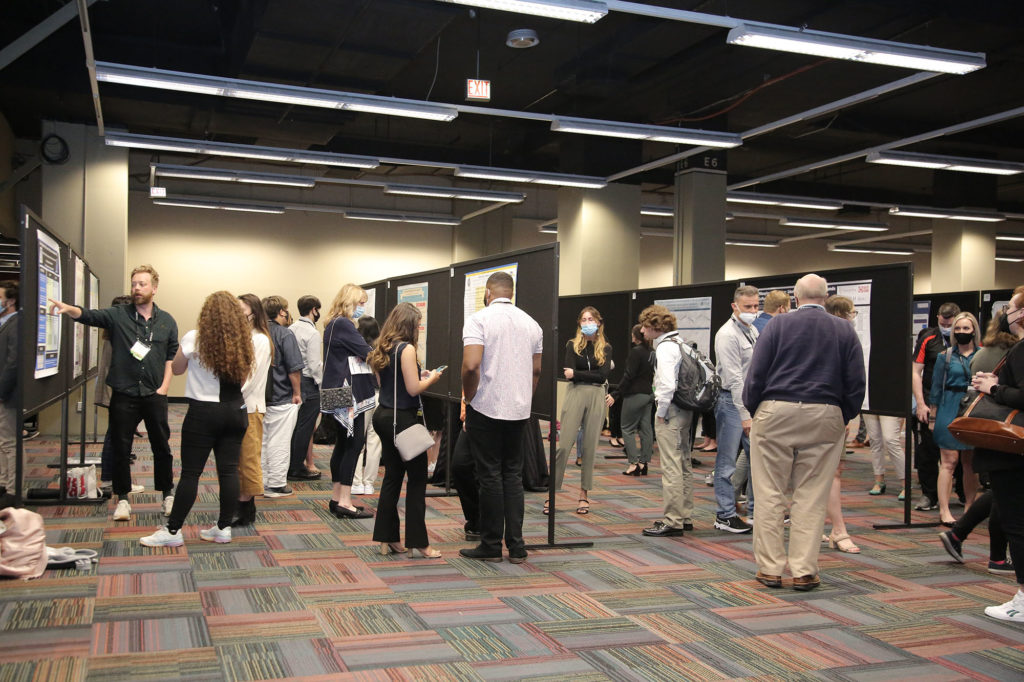
The first time creating a scientific poster to present at psychological conferences can be confusing and nerve-racking for many, especially undergraduate students. If you are studying or working at a higher education institution, the university’s writing center or libraries will have a lot of resources on how to prepare a poster, including specific examples (e.g., New York University, 2022). If you don’t have access to these resources, there is a multitude of cost-free online information that you can use. As an early-career student researcher and Emerging Scholar Award winner from the 2022 APS Convention, I will provide some personal experiences and advice to create an effective poster.
Think of a poster as a creative visual outlet!
When planning your poster, visualize the methods, designs, and results in figure forms like graphs, plots, or charts, rather than in text form like an essay or a manuscript. You should have fun, enjoy the process, and explore your artistic skills! Although some conferences may have specific requirements for font size, font color, or the number of figures/tables you can include, you can still express your unique taste through mapping the layout that fits your study. For instance, in experimental designs, if your results are not significant but the methods are thorough and thought-provoking, you can save more space to draw the flowcharts that explain the procedures or include the materials that you showed the participants. My first poster was presented at the 2022 Western Psychological Association Convention (Figure 1), and I believe the results were the most exciting part, so I placed them in the center. This poster is not my best draft (and you’re not expected to master anything in the first try!), but I think you can learn a lot from my shortcomings to improve your own presentation.
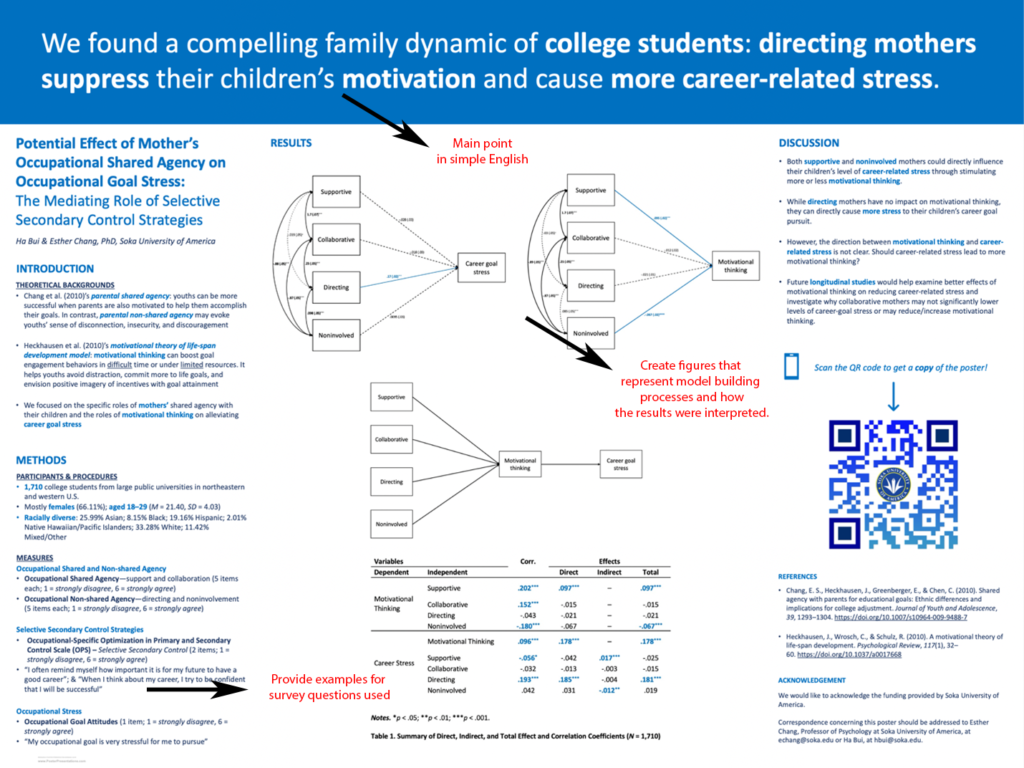
View your poster from audience’s perspectives.
Consider the potential audience when presenting your poster. Do you have an intriguing title that can capture their first impression? Is the poster readable with the appropriate font size and colors? You would not want to make a poster with 10 different colors or have walls of texts with a font size of 12 on a 36 x 48 poster (even size 20 is small, in my opinion). In addition, consider your audience’s levels of interest and information retention. Try to include only the main results and/or the key takeaway messages that people can easily remember after 2 to 5 minutes of listening to your presentation. It’s always tempting to put every detail into your poster, yet the goal is not to show how much you know, but to inform the audience about a phenomenon and foster discussions about the findings, future directions, or related studies.
Present with simple words and relatable narratives.
To make your study more memorable, try to use simple, plain English and avoid abbreviations when presenting your results, as not everyone in your audience may know the technical jargon. Even if you’re presenting to specialists in the field, it would be useful to explain the measures you used in your study. For example, if I were to present to a general audience, I would use ‘thinking processes’ instead of ‘cognition.’ Also prepare some narratives or personal comments and analogies to transform an abstract topic into a concrete image that the audience can remember. For instance, if you study motivation and goal engagement strategies, try to ask the audience about some of their academic, career, or health-related goals and habits to start the conversation.
See all Communicating Psychological Science columns
Use social media to communicate your study.
In addition to creating and presenting a poster, share your findings on social media sites like Twitter, LinkedIn, Instagram, Facebook, and your personal blog! Practice open science as a movement, or in Hagger’s (2022) view, a ‘mindset’ to increase accessibility and future research contributions. To further communicate your own research publicly, you can also include a QR code in your poster that links to a digital copy of the poster, a short video presentation of your study, and your personal contacts. This practice can be especially helpful if you are a student or an early-career researcher, as you will increase your presence in the academic community and welcome potential feedback from senior researchers. And having your first conference poster presented already makes you a great example for other junior researchers.
Stay confident and open-minded!
Don’t be discouraged if you encounter nonsignificant results or harsh criticisms! Research is about nonstop revisions, so you always have opportunities to adjust your methods, designs, and analyses (Brock, 2019). People have different preferences over how psychological science research should be conducted and how posters should be presented, so don’t worry too much if your results are not broadly significant or if people have strong opinions about your study approach. Nonsignificant results are meaningful themselves! Be open-minded and learn about new topics, but also believe in yourself and your ability to do research.
Feedback on this article? Email [email protected] or login to comment.
Related content we think you’ll enjoy

Communicating Psychological Science: Why You Should Write an Op-Ed—and How to Start
Widely published researchers Lara B. Aknin and Elizabeth W. Dunn provide their insights and advice regarding writing and submitting op-eds to the media.

Latest PSPI: The Science of Visual Data Communication: What Works
References
Brock, J. (2019, September 16). 5 tips for dealing with non-significant results . Nature. https://www.nature.com/nature-index/news-blog/top-tips-for-dealing-with-non-significant-null-results
Hagger, M. S. (2022). Developing an open science ‘mindset.’ Health Psychology and Behavioral Medicine , 10 (1), 1–21. https://doi.org/10.1080/21642850.2021.2012474
New York University. (2022, July 20). How to create a research poster . https://guides.nyu.edu/posters
APS regularly opens certain online articles for discussion on our website. Effective February 2021, you must be a logged-in APS member to post comments. By posting a comment, you agree to our Community Guidelines and the display of your profile information, including your name and affiliation. Any opinions, findings, conclusions, or recommendations present in article comments are those of the writers and do not necessarily reflect the views of APS or the article’s author. For more information, please see our Community Guidelines .
Please login with your APS account to comment.
About the Author
Ha Bui is a BA candidate in Social and Behavioral Sciences (focused Psychology) at Soka University of America in California . A 2022 APS Emerging Scholar Award recipient, Ha’s research interests include lifespan development, academic and career readiness and success, low-income and first-generation students, and mixed methods in social sciences.

Communicating Psychological Science: Global Threat Without a Global Consensus
Özge Gürcanlı Fischer-Baum discusses the need for supportive policies to elevate the power of science and to educate the public about climate change.

Communicating Psychological Science: Neurodiversity in the Workplace
Özge Gürcanlı Fischer-Baum explores how greater awareness of neurodiversity has influenced great (but not enough) change in research, advocacy, and cultural expectations.

Communicating Psychological Science: The Importance of Common Language
Özge Gürcanlı Fischer-Baum explores the often overlooked need to create a common language between specialists and non-specialists.
Privacy Overview
Psychological Science Presentations and Conferences
Psychology 51 poster template.
Example Poster
Poster Formatting Instructions
- Sans serif fonts for titles
- Serif fonts for text
- Font sizes 24-28 for main text
- White background (save the earth!)
- Use the same margins, align them
- Max width: 48"
- Max length: 36"
Alternative (New) Templates
Check out this video on a revolutionary way to create posters that people will actually engage with at poster sessions!
Here are the poster templates that go along with the video (the templates are shown and explained from minutes 13-20).
The amazing new templates are shown below! (*These are just images, but click on the poster template link above to download the PowerPoint templates).
Example Student Posters
Student Poster Presentations
Psychological Conferences
- American Psychological Association
- Association for Research in Personality
- European Society for the Study of Personality Disorders
- North American Society for Research in Personality Disorders
- Society for Personality and Social Psychology
- Society for Research in Psychopathology
- SSCP is a great resource but they do not have their own conference
Mailing Address
Pomona College 333 N. College Way Claremont , CA 91711
Get in touch
Give back to pomona.
Part of The Claremont Colleges
How to Create a Research Poster
- Poster Basics
- Design Tips
- Logos & Images
What is a Research Poster?
Posters are widely used in the academic community, and most conferences include poster presentations in their program. Research posters summarize information or research concisely and attractively to help publicize it and generate discussion.
The poster is usually a mixture of a brief text mixed with tables, graphs, pictures, and other presentation formats. At a conference, the researcher stands by the poster display while other participants can come and view the presentation and interact with the author.
What Makes a Good Poster?
- Important information should be readable from about 10 feet away
- Title is short and draws interest
- Word count of about 300 to 800 words
- Text is clear and to the point
- Use of bullets, numbering, and headlines make it easy to read
- Effective use of graphics, color and fonts
- Consistent and clean layout
- Includes acknowledgments, your name and institutional affiliation
A Sample of a Well Designed Poster
View this poster example in a web browser .

Image credit: Poster Session Tips by [email protected], via Penn State
Where do I begin?
Answer these three questions:.
- What is the most important/interesting/astounding finding from my research project?
- How can I visually share my research with conference attendees? Should I use charts, graphs, photos, images?
- What kind of information can I convey during my talk that will complement my poster?
What software can I use to make a poster?
A popular, easy-to-use option. It is part of Microsoft Office package and is available on the library computers in rooms LC337 and LC336. ( Advice for creating a poster with PowerPoint ).
Adobe Illustrator, Photoshop, and InDesign
Feature-rich professional software that is good for posters including lots of high-resolution images, but they are more complex and expensive. NYU Faculty, Staff, and Students can access and download the Adobe Creative Suite .
Open Source Alternatives
- OpenOffice is the free alternative to MS Office (Impress is its PowerPoint alternative).
- Inkscape and Gimp are alternatives to Adobe products.
- For charts and diagrams try Gliffy or Lovely Charts .
- A complete list of free graphics software .
A Sample of a Poorly Designed Poster
View this bad poster example in a browser.

Image Credit: Critique by Better Posters
- Next: Design Tips >>
- Last Updated: Jul 11, 2023 5:09 PM
- URL: https://guides.nyu.edu/posters
An official website of the United States government
The .gov means it’s official. Federal government websites often end in .gov or .mil. Before sharing sensitive information, make sure you’re on a federal government site.
The site is secure. The https:// ensures that you are connecting to the official website and that any information you provide is encrypted and transmitted securely.
- Publications
- Account settings
Preview improvements coming to the PMC website in October 2024. Learn More or Try it out now .
- Advanced Search
- Journal List
- Ann Med Surg (Lond)
- v.11; 2016 Nov

How to make an academic poster
Buket gundogan.
a University College London Medical School, London, UK
Kiron Koshy
Langhit kurar.
b Maidstone and Tunbridge Wells NHS Trust, UK
Katharine Whitehurst
Academic posters are an excellent way to showcase your work at conferences and meetings. They can be used in poster presentations and serve as a summary of your project. In this how to article, we demonstrate how trainees can make and deliver a successful academic poster.
- • Academic posters are an excellent way for trainees to showcase their work at conferences and meetings.
- • When done effectively they provide a succinct and attractive summary of your project.
- • This guide aims to provide trainees with a practical and concise method to prepare their academic poster.
Academic posters, when done effectively, are a succinct and attractive way to showcase your work at conferences and meetings. Unlike oral presentations, your audience may not be static so clear design and distilled content are all the more important. Similarly to oral presentations, successful posters can generate discussion amongst the audience members therefore its important to have a clear plan of what to say when stood alongside your poster. In this article, we highlight the important aspects to creating an effective academic poster.
1. Why make an academic poster?
A poster presentation allows you to summarise your project into a concise and aesthetically pleasing format. It is one of the main ways you will present your work when at conferences [1] , [2] . For this reason, you need to make sure your poster is of good quality. This guide will serve to help you with this.
2. How to prepare a poster
There are many computer programs you can use to create your poster. Many use Microsoft Publisher or PowerPoint. It is important that you are comfortable using these programs as you will likely be doing a lot of editing. If you are not familiar with these programs, librarians that are present in most universities will be able and usually willing to help you out.
2.2. Design
It is useful to attend a variety of scientific meetings to collate ideas on how to create an informative and aesthetically pleasing poster. The most important concept for the overall design is not to overly embellish the poster with formatting and pictures, as this may distract from the content. The information should be minimal, as in a slide presentation, stating only key points rather than complete sentences.
The colour system should have effective contrasting backgrounds (e.g. blue and yellow, black and white) to ensure the text is easy to read. The flow of the poster should also be logical and ideally follow a longitudinal algorithm. This should begin with aims and objectives and flow downwards in columns to methods, results, conclusions and finally references. The same format is also adopted when writing scientific abstracts. Once the poster is drafted, it is important to adhere to the instructions provided by the congress you are attempting to submit to. Failure to comply to guidelines may result in your poster not being considered for a poster award, or perhaps even result in expulsion from the meeting altogether.
Prior to submission it is also important ask as many senior colleagues for feedback on your poster as possible. They will be able to provide feedback on the overall readability of the poster, including formatting. Start preparing your poster early – one month is sufficient time to allow for revisions to be made [3] .
3. Information to include in the format – our top tips
3.1. headings.
This should be clear in bold and grab the reader's attention. It is recommended you use a short, sharp heading relevant to your study. Long scientific titles can often bore the reader and distract from the main body of text. The heading should also include the centre at which the study was conducted and the main contributory authors (as per the authorship critera of International Committee of Medical Journal Editors (ICMJE)). Logos for the trust you are working at, as well as the conference/congress you are attending can be placed on either side of the title.
- • Title: this needs to have the largest font size of your entire poster to be eye catching. Keep the title as short as possible – it doesn't need to be a paragraph long [1] , [3] .
- • Type of manuscript: whether systematic review, research article or another manuscript type.
- • Authors: include everyone who has contributed [4] .
- • Affiliations: should come directly under authors. This should show which organisations are represented by the authors and/or where the research took place and also contact details.
3.2. Main body
This should follow a logical structure guiding the reader through the poster. The more concise your poster, the better – approximately 100 words per section is ideal [5] , [6] . It is very important that your poster is not wordy. Too much text can be off-putting for the audience. The structure should follow a simple abstract outline.
These are the following sections we recommend as a rough guide, but do check the requirements at your specific conference:
- • Introduction
This should include a short background of the topic to set the context and state the main aims and objectives of your piece of work. What differentiates your work from your competition? Why is your work novel in the field?
- • Methods
The methods section (poster space permitting) should include basic parameters including target sample, setting, duration of study, inclusion/exclusion criteria, statistical techniques, key interventions assessed and primary outcome measures.
- • Results
The results section should include data analysis and stratification and should only include the results which answer the stated hypothesis. Moreover, essential to the results section is the inclusion of pertinent and key graphs, graphics, images and tables. These need to be large enough for the audience members to see and be as attractive and clutter-free as possible.
- • Conclusion
The conclusions must derive directly from the results section and answer solely what has been proposed at the start of the paper. Obvious confounders and limitations should also be acknowledged. Key improvements as well as potential for project expansion should also be considered.
- • References
Only cite key references integral to your study, as references are wordy and space consuming. Use a smaller font to the main body text to reduce this.
3.3. Templates
Your host institution or the conference may require you to use a specific template for the poster. This may include a logo, colour scheme or a certain layout. You should check this before you start designing your poster.
Numerous templates for designing poster exist online and within your local trust library. Computer software may also have inbuilt templates to assist with the design process.
3.4. Tables and figures
It is a good idea to include graphs/images/tables as this will make your poster look more aesthetically pleasing [1] , [6] , [7] . They can also provide more information without crowding the poster with text. Make them colourful, though avoid colours that clash with the text colour [8] . Tables and figures can add new information or graphically present what has already been said in the poster. The arrangement of figures and tables varies and there is no universal rule, however figures interspersed within text is popular and looks attractive. Furthermore, ensure that the figures and images chosen are of a good resolution to avoid blurring when printed and presented.
3.5. Font size
The conference may specify this, however, generally for the main body, size 24 is used for text and size 32 for titles. The introduction section at the top of the poster should have a larger font than this [2] .
3.6. Colour
It is a good idea to stick to one or two colours for main text; anymore and your poster may look too busy. It is also important to check colours in advance at the place you wish to print your poster, as certain colours may come out in a different way to that expected [9] .
3.7. Printing
Make sure to factor in the time (and cost) of printing the poster if this is required. Some companies will print the same day, while others may take longer. Check with your host institution/conference if they use a specific company, as they may be able to provide a discount.
3.8. Electronic posters
A growing number of conferences are using electronic posters (e-posters), which are screens that display an electronic copy of your poster, rather than a paper version. These can either be static images which are laid out similarly to a paper poster, or they can be slide shows of your work, which are displayed like a PowerPoint presentation which then go on rotation at the conference. They may also include videos and animations, so bear this in mind when you are selecting content for your poster [7] , [8] .
4. On the day
Poster presentations are generally more relaxed than oral presentations. You will need to arrive on time to put your poster up – bring extra pins or Velcro tabs as these aren't always in supply. Many presenters also place a plastic pocket to the bottom or side of their poster on the day which provides a small version of their poster for readers to take away – this can be useful.
Delegates of the conference will usually be able to look at the posters throughout the day or during tea/lunch breaks. However, there will usually be a set time when judges will inspect the posters. During this time, you will need to stay with your poster, perhaps present it and answer the questions which the judges or audience members will have.
4.1. Presentation
While presenting, the intention is to guide the reader through your poster which if organised in a logical order, should not be read off but simply used to illustrate your point. What you say can then be substantiated by pictures which you can refer to for emphasis. Do keep your presentation succinct and highlight the salient points of your study. Moreover, its good practice to provide some background to your work at the start – it may sound obvious, but the audience may not necessarily know why this work is important and it is up to you to set the scene on the relevance of the project.
It's a good idea to refresh your memory on your project and be familiar with it before the presentation as the audience will likely have questions and there are often prizes for the best posters. Examples of common questions to prepare for include: how your work may be relevant to current clinical practice, how can it be developed further and what the limitations of your study were.
Attire is also often overlooked. You must maintain a professional appearance throughout and this can often add hidden points to your poster score under presentation. Be friendly and approachable and if there are any questions left unanswered, acknowledge this and offer to develop your study further.
- • Academic posters are a good way to showcase your work.
- • Preparing posters in advance is vital.
- • Stick to a clear format which is easy to read from 1 m away.
- • Practice your presentation in advance and think about questions you may be asked after your presentation.
Sources of funding
No funding received.
Author contribution
BG, KK, LK, KW contributed to writing the paper.
Conflicts of interest
Buket Gundogan.
- My Allegheny
- Student Resources
- Office of the President
- Give to Allegheny
Posters Presentations
Poster presentations provide the opportunity for the presenter and the audience to talk with one another. Each presenter is provided with a freestanding bulletin board or a small table top on which to display his or her poster. Usually a space 3.5 feet high by 3 feet wide is available for the poster materials.
A relatively large number of posters will be displayed during each poster session. During the designated period, the audience moves through the poster displays, stopping to interact with those who are presenting research that is of special interest to them. Thus, the interaction between the presenters and the audience is likely to be more meaningful than is typically the case in paper sessions. Therefore, when constructing your poster, remember to utilize the opportunities provided by this method of presentation. Successful poster presentations are those which achieve both coverage and clarity. Using PowerPoint One nice way to prepare a poster is to use PowerPoint. You may want to print this document so you can keep it at hand when you prepare you poster with PowerPoint. Coverage Have you provided all the obvious information? Will a casual observer walk away understanding your major findings after a quick perusal of your material? Will a more careful reader learn enough to ask informed questions?
In addition to a title/author label and abstract, most successful posters provide brief statements of introduction, method, subjects, procedure, results, and conclusions. Ask yourself, “What would I need to know if I were viewing this material for the first time?” and then state that information clearly. Clarity Is the sequence of information evident? Indicate the ordering of your material with numbers, letters, or arrows, when necessary. Is the content being communicated clearly? Keep it simple. Place your major points in the poster and save the nonessential but interesting sidelights for informal discussion. Be selective. Your final conclusions or summary should leave observers focused on a concise statement of your most important findings. Details 1. Construct the poster to include the title, the author(s), affiliation(s), and a description of the research, highlighting the major elements that are covered in the abstract.
2. Minimize detail and try to use simple, jargon free statements.
3. Remember that pictures, tables, and figures are amenable to poster display
4. If you can, use color in your visuals.
5. Make sure your lettering is neatly done and is large enough to be read from a distance, i.e., do not simply pin up a set of typed pages.
6. Consider using a flow chart or some other method of providing the viewer with a guide to inspecting your display.
7. Don’t overwhelm the viewer with excessive amounts of information; rather, construct a poster display that enhances conversation.
8. Be ready to put up and take down your poster at designated times.
If specified by your instructor, prepare a printed version of your paper (about 25) with the details of the research for those who may want more information about your project. Be sure to indicate on the paper who you are and the conference source reference (date, place, purpose of the conference).
It is an honor to have the opportunity to present at a research conference (or a class presentation). You have an obligation to prepare a neat, well organized display and to be present at your display for the entire poster session period. With a little thought and creativity, you can make your presentation a very pleasing one for both you and your audience. Examples of poster arrangements: (Click on the pictures for a larger view.)

- Skip to Content
- Skip to Main Navigation
- Skip to Search

Indiana University Indianapolis Indiana University Indianapolis IU Indianapolis

- Advisory Board
- Conference Travel Support
- Presentation Resources
- IU Indianapolis Research Programs
- Other Summer Research Programs
- Non-CRL Research Opportunities
- Human Subjects Research
- International Research
- Finding Mentor
- MURI Project Awards
- R-Course Development
- R-Course Awards
- Posting Student Positions
- Creative Activities Award
- The Bowling Jones Russo Award
- Chancellor Award
- Kathryn J. Wilson Award
- Richard E Ward UROP Award
- Conference Program
- Program & Presenters
- Other CRL Events
- Research Poster Presentation Preparation Guide
- In His Own Words, International Research Project Experience: Eric Durr
- In Her Own Words, Posters On The Hill: Abigail Parker
- 2019 IU Research Day Highlights
- News_1_12_2010
- From Project SEED to Capitol Hill
- In Her Own Words, Posters On The Hill: Dana Oaks
- Student Spotlight: Michelle Ramírez
- In Her Own Words, The Benefits Of Undergraduate Research: Cecelia Chapin
- 2016_News_9_19_2016
- 2015_News_10_25_2015
- 2016-2017 Highlights
Center for Research and Learning

- Research Scholarly Articles
Poster Design Guide
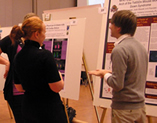
Required Poster Dimensions: 32 inches wide x 40 inches tall
Planning and managing your content.
- Examples & Tutorials

Designing Your Poster
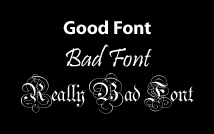
- Title: 100-144 points
- Section Headings: 72-84 points
- Main Content: 18-24 points, double spaced
- Acknowledgements and References: 10-16 points, single spaced

External Examples & Tutorials
- Mission & Values
- About Sport & Performance Psychology
- Membership Benefits
- Membership Types
- Executive Board
- Special Interest Groups
- CMPC Emeriti
- In Memoriam
- Strategic Plan
- Privacy Policy
- Contact AASP
- Certification
- Benefits of Certification
- Certification Program Candidate Handbook
- How to Apply
- Application Forms
- Exam/Study Resources
- Registry of Approved Mentors
- Professional Ethics & Standards in Sport Psychology Course: K1
- Diversity & Culture Course: K8
- CMPC Course Options (Outside AASP)
- Recertification
- Certification Program Updates
- Find a Certified Mental Performance Consultant® (CMPC)
- Liability Insurance for Member CMPCs
- Ethics Code
- Contact the CMPC Certification Council
- Publications
- Journal of Applied Sport Psychology
- Journal of Sport Psychology in Action
- Case Studies in Sport and Exercise Psychology
- Journal for Advancing Sport Psychology in Research
- Journal Awards for JASP, JSPA, and CSSEP
- Essential Guide for Mental Performance Consultants
- Directory of Graduate Programs in Applied Sport Psychology
- Annual Conference
- 2024 Call For Abstracts
- 2024 Continuing Education Workshop Submissions
- In-Person Schedule
- Registration
- Hotel & Travel
- CEUs for CMPC
- Graduate Program & Career Fair
- Student Abstract Awards / Young Researcher Award
- Student Diversity Travel Grant
- Upcoming Conferences & History
- Knowledge Areas
- Required CE Areas
- Virtual Conference: Generational Considerations within Sport and Performance Psychology
- Dissertation Award
- Distinguished Applied Practitioner Award
- Distinguished International Scientist-Practitioner Award
- Distinguished Scientist-Practitioner Award
- Distinguished Public Communication, Awareness, and Outreach Award
- Dorothy V. Harris Memorial Award
- Early Career Applied Practitioner Award
- Inclusion, Diversity, and Excellence in Advocacy and Social Justice (IDEAS) Student Award
- Kate F. Hays Distinguished Mentor Award
- Ken Ravizza Performance Excellence Award
- Master's Thesis Award
- Outstanding Student Practice Award
- Teaching Excellence Award
- AASP Past Award Recipients
- Research Grants
- Collaborative Research Grants
- Community Outreach Grant
- Gualberto Cremades International Research Grant - AASP Foundation
- Oglesby-Snyder Grant for Equity and Cultural Diversity
- Seed Grants - AASP Foundation
- AASP Past Grant Recipients
- Students Center
- Initiatives
- Video Resources
- Student Delegates
- Regional Conferences
- Student Awards
- Undergraduate Programs in Sport, Exercise, and Performance Psychology
- Graduate Training
- Diversity, Equity, Inclusion, Belonging & Justice (DEIBJ)
- AASP Position Statement on Human Diversity
- Events, Institutes, and Initiatives
- Resources and References
- Grants and Awards
- International
- Past Diversity Lectures
- AASP Foundation
- Foundation Honor Roll
- Donation Form
- Research Crowdfunding
- Media Center
- News Releases and Association Updates
- Media Inquiries
- AASP Members in the News
- Featured Podcast Library
- CMPC Directory
- About Sport & Performance Psychology
- AASP Blog for Athletes, Coaches, and Parents
- CMPC Certification Updates
- Related Organizations
Creating an Effective Poster Presentation
The poster: general comments.
The poster format has become an increasingly popular form of communication at AASP meetings. New and exciting research ideas can gain recognition and meaningful feedback through a well-organized and an eye-catching poster. Presenters must recognize that participants at the meeting probably have not had the opportunity to read all abstracts before they walk into the display area. The poster must have the strolling audience in mind. Attention will invariably be drawn to colorful posters with a crisp, clean design and a large easily read title.
The Poster Title
For a poster title to be easily read, it must be large. Keep in mind that the title is at the very top of the board, i.e., approximately 7 feet from the floor level. The centered title should stretch across most of the width of the poster board. The letters in the title should be at least 2 ½" high (preferably 3") and be as wide (i.e., thick) as possible. If the title is brief, consideration should be given to using all upper case letters. Centered below the title should be the author(s) name(s) and affiliation. First names should be used rather than only initials in order to encourage interaction (in verbal sessions, presenters are introduced by their first name). The letters in this second line should be at least 1 ½" high (preferably 2"). If there are several authors, you may wish to have the affiliation on a third line (1" high).
The Poster Content
To develop comprehensible posters, follow the vital instructions in the box:
It will be a missed opportunity if your poster is unintelligible because too much information is placed in too little space, or if there is insufficient detail.
In all seriousness, you can do something about the quality of your poster presentation. When one considers the amount of time, money and energy that goes into a research project, it is important to present it in a clear and concise manner. To have effective communication dashed by an incomprehensible poster presentation is indeed a missed opportunity for the author(s) and viewers alike.
Many of the rules for preparing a poster are "at odds" with those for writing a research article. The most obvious difference is that the poster can and should be in print form. In an article we might write, "The participants in this investigation were 70 Pee Wee ice hockey players from the most elite division in the city. Pee Wee players ranged in age from 12 to 13. Goal tenders were not examined in this study." However, in a poster, it is more effective to have a larger heading "PARTICIPANTS" below which is presented. "70 Elite Pee Wee (ages 12–13) Ice Hockey Players (no Goaltenders)." Less verbage in large type allows for quick and easy reading. For a research article, authors are encouraged to include results in the text. In a poster, presenters should portray as many of their results as possible in a pictorial fashion (i.e., bar graphs for comparisons of means and pie charts for indicating the percent of variance accounted for). Not only are these formats easily read, but they allow for the incorporation of color and are, therefore, much more pleasing to the eye.
Do not overwhelm the viewer with too much material. However, enough material should be there so that a straight–forward story can be told without your presence.
- ABSTRACT — Many would argue that an abstract is not necessary on a poster board given the fact that the viewers already have a book of abstracts. An abstract takes up valuable space on the poster board.
- INTRODUCTION — This section should summarize (point form) the PURPOSE(S) and RATIONALE for the study. Do not overwhelm your reader with a complete literature review. However, don\'t be modest. Make the significance and the originality of the work very clear. This is especially important for viewers from other sections.
- METHOD — In this section, the PARTICIPANTS should be identified. Often the DESIGN can be explained in a pictorial manner.
- RESULTS can be effectively presented by simple tables, figures, illustrations, and/or photographs. Make each stand on its own, so the viewer doesn\'t have to refer elsewhere to understand the message(s).
- SUMMARY and CONCLUSION — Briefly, state the "bottom lines" of your work.
- IMPLICATIONS and APPLICATIONS — Keep in mind that one of our "A"s stands for "Applied." Don\'t be afraid to take a leap and suggest what your findings say to the practitioner. This should stimulate discussion.
- ACKNOWLEDGEMENT — Identify funding source(s), institutional support, and individuals who have contributed significantly but are not listed as authors.
The Poster Design
The subject of design is complex, and any rule can be broken by one artistic flair. Some guidelines to make a poster more attractive and interesting are:
- The most important principle is simplicity . At first glance, from 10–15 feet away, the viewer should see an easy–to–read title and an uncluttered, neat arrangement of graphic illustrations and text. It should be obvious where to start inspecting the poster and where to go from there. (While one reads a page in a book from left to right on one line and then goes back to the left side of the page to read the next line, this does not work for the poster viewer because she/he has other viewers in front of the poster board. Therefore, material should flow top to bottom, then left to right .) The parts should either be numbered to facilitate this flow or there should be arrows which graphically led the viewer.
- Leave some open space in the design. The same rule applied as to packing a suitcase: when you\'re finished take out half. Tightly packed space tires the eye and the mind.
- Use elements of different sizes and proportions . Same–size and same–proportioned components result in a boring design.
- Strong visual contrast is a must. Many people have difficulty distinguishing closely–related colors, like green from blue, or among subtle shades of a primary color, particularly against incompatible background colors.
- Include photographs to attract attention, break monotony, and exemplify your points.
- Make a scale drawing of your layout. Don\'t forget to account for open space and up to 7" of depth for the title. With this year\'s poster boards being 4\' high and 8\' wide, this would allow for a maximum of 21 poster elements (7 rows across and 3 rows down of standard 8½" x 11" sheets with a 3" of open space surrounding each sheet of information). We are not recommending that all sheets be equal size or that the material be displayed this symmetrically. Rather, we are emphasizing the need for planning .
- A "Handout" is often an important addition to a poster. This can be used to provide additional information, detailed data, summary charts, and/or references. The sample two–sided handout attached, which is a miniature of an entire poster, provides viewers with a more permanent record of what they saw at the poster session.
Additional Poster Hints
1. Mounting Ideally, all poster elements should be mounted with an adhesive on poster board or on 1/8" foam–core board (no thicker, or pins will not go through it and hold it to the main board). A half–inch or so of the colored poster board extending beyond the edge of an illustration attractively frames it. Select the mounting color carefully so that is does not overpower the picture. Illustrations mounted on the white foam–core board can be edged with colored stick–on tape.
2. Transporting the Poster Posters often have to be taken to distant meetings. If you are flying, make the poster elements small enough to carry on the aircraft.
3. Setting up the Poster You may have only a short time to set up your display, so prepare in advance. Have these items in a poster emergency kit: tape measure, 9\' length of string, box of clear or same colored push–pins (get longer than the standard ones if mounted illustrations are thicker than 1/8"), roll of double–stick tape, scissors, glue, package of tissue paper. Have a sketch of the poster layout with positions of a few key components measured off so you know where to place them. Set up a level line, if needed, by tying the string between two push–pins set a measured distance above the bottom of the display board. Make certain you set up in your assigned space.
4. Having a Permanent Record of your Poster Don\'t forget to bring a camera so that you can take a picture of all your hard work. Also, have someone else take a picture of you and your co–authors beside the poster. (It would be impressive if poster viewers were in the picture as well!)
Happy Poster Preparation
Ideas presented have been drawn from guidelines published by the A.C.S.M. and the Society of Behavioral Medicine, suggestions from colleagues, and many years of trial and error.
Association for Applied Sport Psychology 8365 Keystone Crossing, Suite 107 Indianapolis , IN 46240 USA
Phone: (317) 205-9225 Fax: (317) 205-9481 Email: [email protected]
- What is Applied Sport Psychology
Undergraduate Research & Prestigious Scholarships
Poster presentation examples, from past urcad events.
Select image to view the poster.
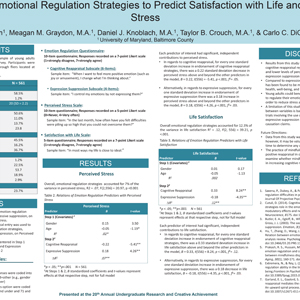
Mobolanle Adebesin Psychology
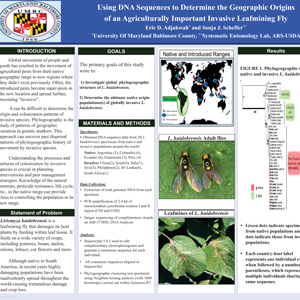
Eric Adjakwah Health Administration and Policy
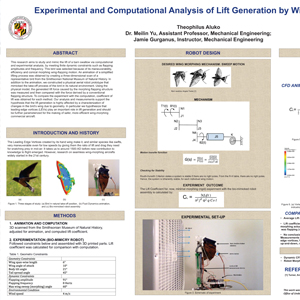
Theophilus Aluko Mechanical Engineering
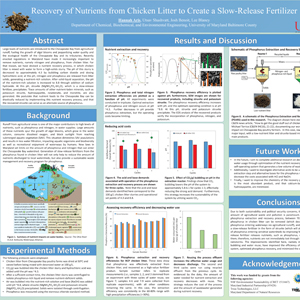
Hannah Aris Chemical, Biochemical, and Environmental Engineering
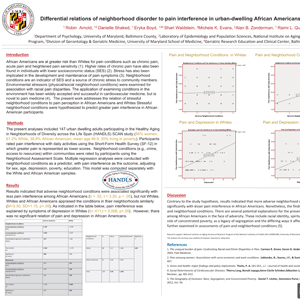
Robin Arnold Psychology
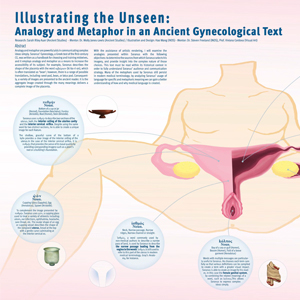
Riley Auer Ancient Studies Zoe Wang Visual Arts
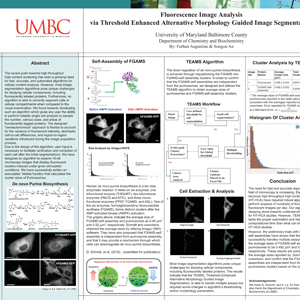
Farhan Augustine Chemistry and Biochemistry
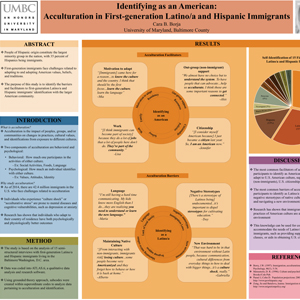
Cara Borja Psychology
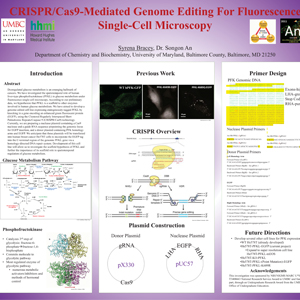
Syrena Bracey Chemistry and Biochemistry
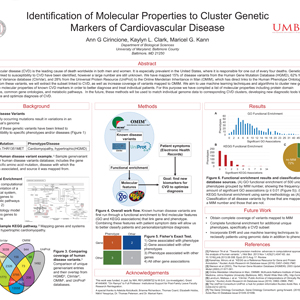
Ann Cirincione Biological Sciences
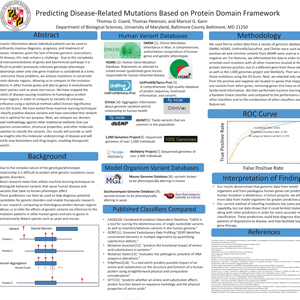
Thomas Coard Biological Sciences
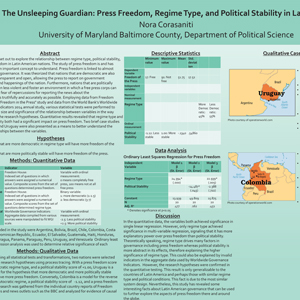
Nora Corasaniti Political Science
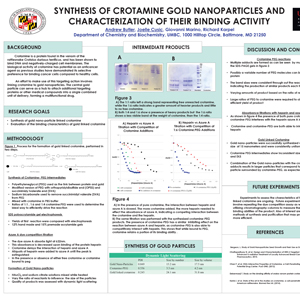
Joelle Cusic Chemistry and Biochemistry
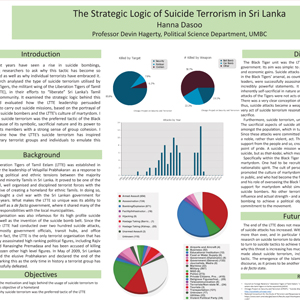
Hanna Dasoo Political Science
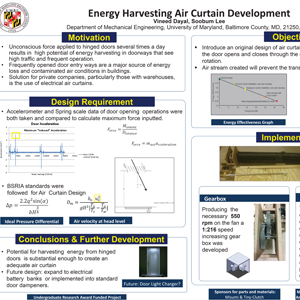
Vineed Dayal Mechanical Engineering
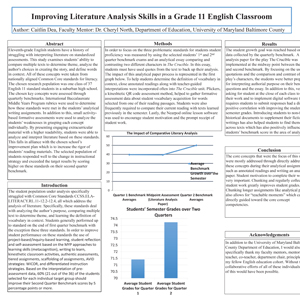
Caitlin Dea Education
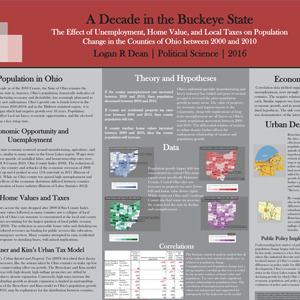
Logan Dean Political Science
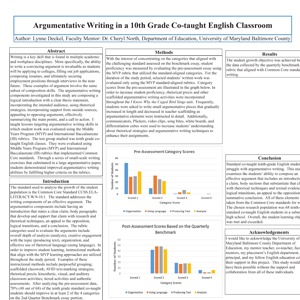
Lynne Deckel Education
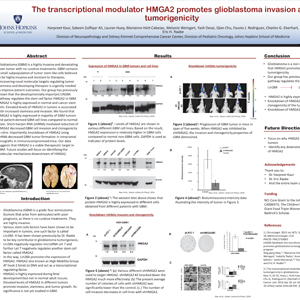
Yash Desai Biological Sciences
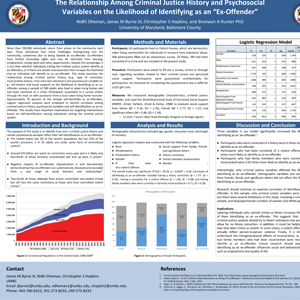
Nidhi Dheman Psychology
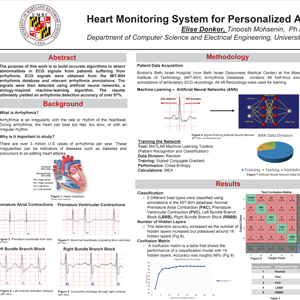
Elise Donkor Chemical, Biochemical, and Environmental Engineering
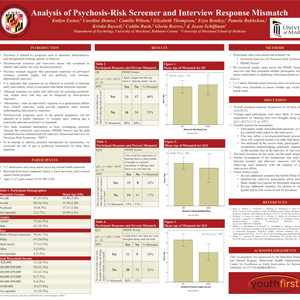
Katlyn Easter Psychology
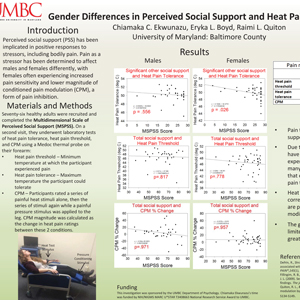
Chiamaka Ekwunazu Psychology
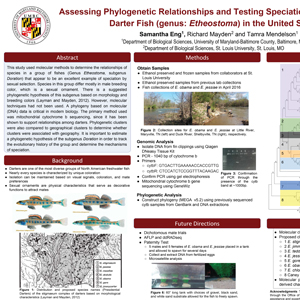
Samantha Eng Biological Sciences
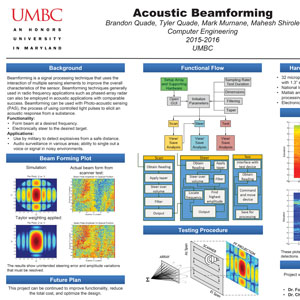
Mark Fisher
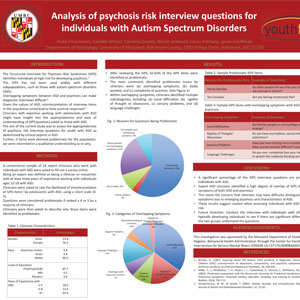
Rivka Fleischman Psychology
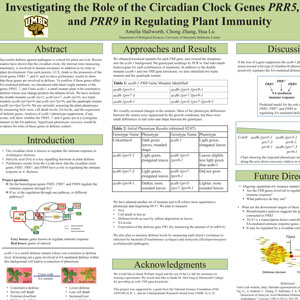
Amelia Hallworth Biological Sciences

Oluwagbotemi Igbaroola Biological Sciences
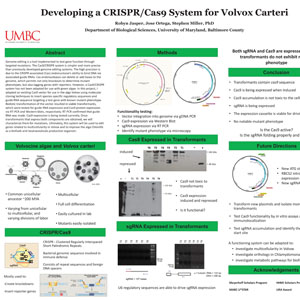
Robyn Jasper Biological Sciences
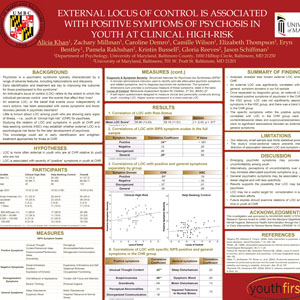
Alicia Khan Psychology
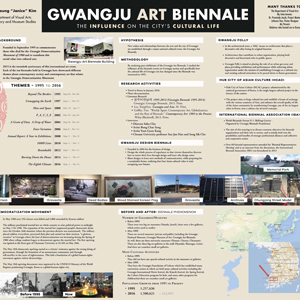
Su Hyoung Kim Visual Arts
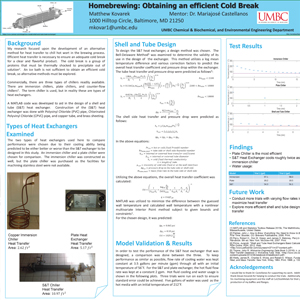
Matthew Kovarek Chemical, Biochemical, and Environmental Engineering
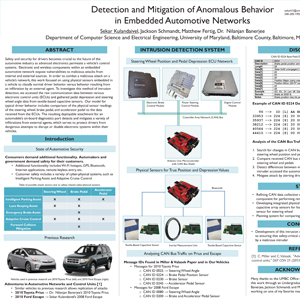
Sekar Kulandaivel Computer Science and Electrical Engineering

Julian Loiacono Computer Science and Electrical Engineering
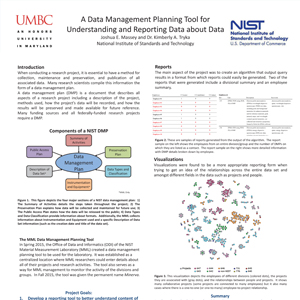
Joshua Massey Computer Science and Electrical Engineering
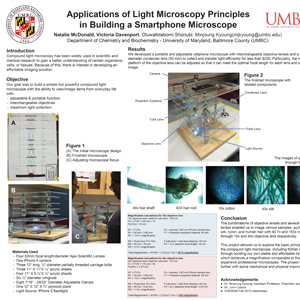
Natalie McDonald Chemistry and Biochemistry
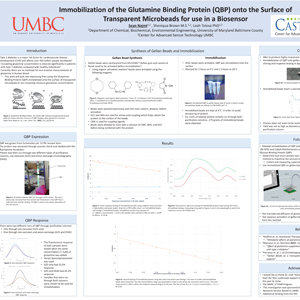
Sean Najmi Chemical, Biochemical, and Environmental Engineering
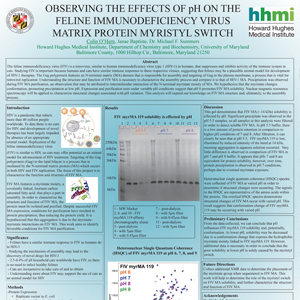
Colin O’Hern Biochemistry and Molecular Biology
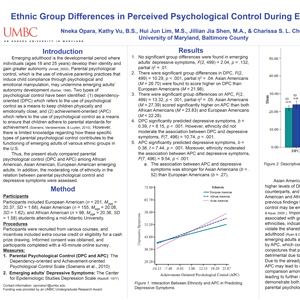
Nneka Opara Psychology
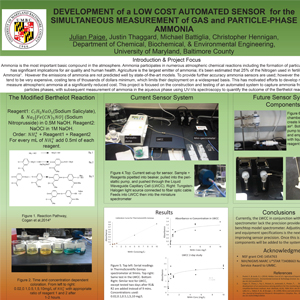
Julian Paige Chemical, Biochemical, and Environmental Engineering
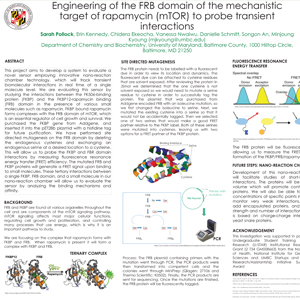
Sarah Pollock Chemistry and Biochemistry
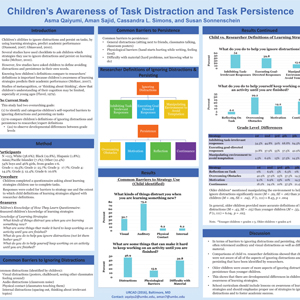
Asma Qaiyumi Psychology
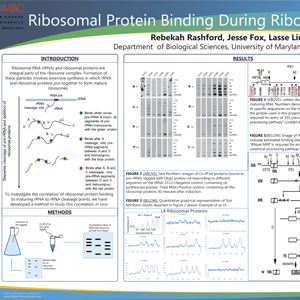
Rebekah Rashford Biological Sciences
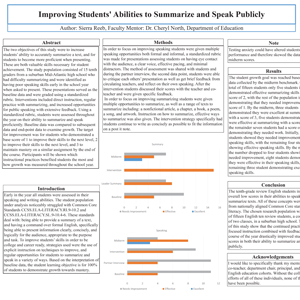
Sierra Reeb Education
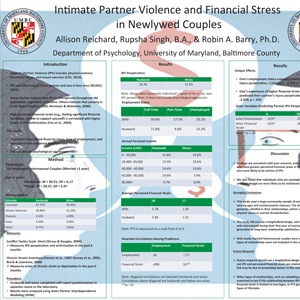
Allison Reichard Psychology
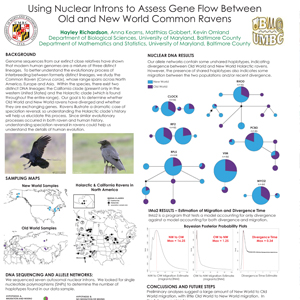
Hayley Richardson Biological Sciences
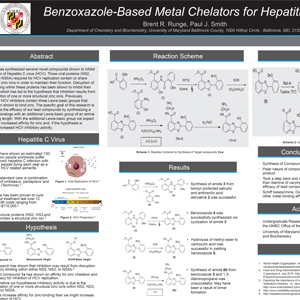
Brent Runge Chemistry and Biochemistry
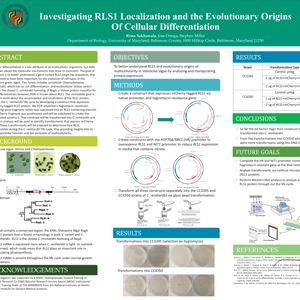
Rima Sakhawala Biological Sciences
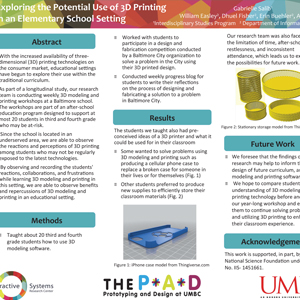
Gabrielle Salib Information Systems
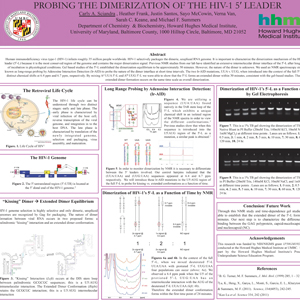
Carly Sciandra Chemistry and Biochemistry
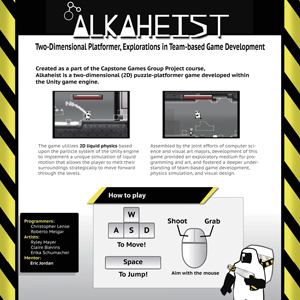
Erika Schumacher Visual Arts
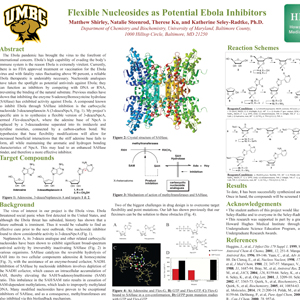
Matthew Shirley Chemistry and Biochemistry
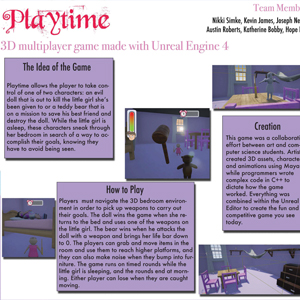
Nicole Simke Visual Arts
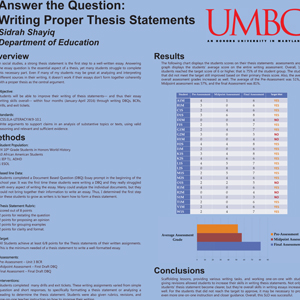
Sidrah Shayiq Education
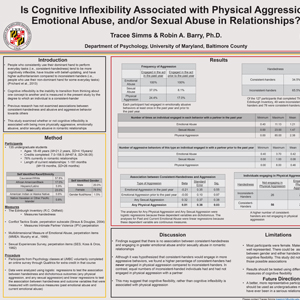
Tracee Simms Psychology
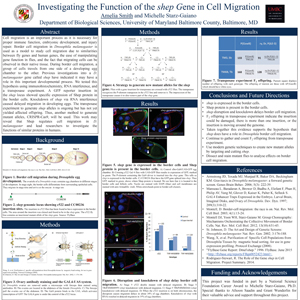
Amelia Smith Biological Sciences
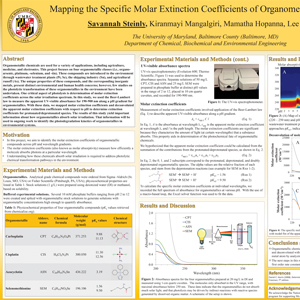
Savannah Steinly Chemical, Biochemical, and Environmental Engineering
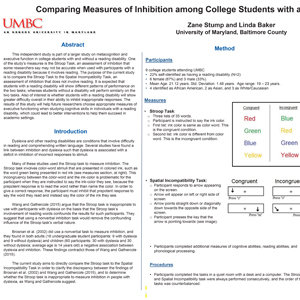
Nevin Varghese Chemistry and Biochemistry
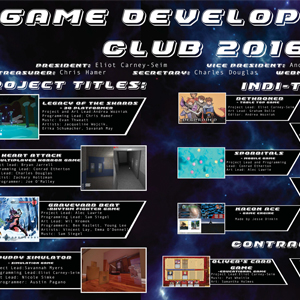
Andrea Wozniak Computer Science and Electrical Engineering
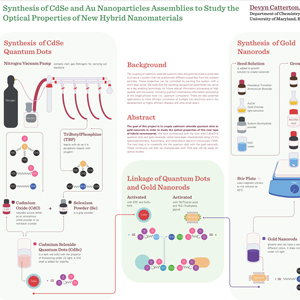
- Accreditation
- Consumer Information
- Equal Opportunity
- Privacy PDF Download
- Web Accessibility
Subscribe to UMBC Weekly Top Stories
I am interested in:.
- I am interested in: Undergraduate
- I am interested in: Graduate
- I am interested in: Professional Masters

10 Tips for a Persuasive Presentation
Powerful presentation is persuasion. here's how to elevate your impact..
Posted May 11, 2024 | Reviewed by Ray Parker
- Presentations aim to effect change. It's essential to be clear about what change you want to see.
- Powerful presenters embrace and extend empathy to seek first to understand their audience.
- Substance and style both matter to create an audience-informed communication experience.
- Persuasive presentations are relevant, reasoned, real, and resonant.

How many of us realize that giving a presentation or making a speech is all about persuasion , influence, and emotional intelligence ? Impactful presenters understand the power of empathy to understand and engage their audience, the efficiency and kindness of having a clear objective and message, and the importance of substance and style—all as a way to connect in a way that engages and inspires.
Much has been written on the power and behavioral science of persuasion, not least by expert Robert Cialdini. His bestselling book Influence: The Psychology of Persuasion explains seven research-based universal principles of influence .
From my experience as a leadership coach working with thousands of people worldwide, I have compiled a list of ten essentials to elevate our presentation.
1. Maintain an "other" focus. What do you know about your audience and how can you find out more? Ask yourself what kind of a speaker will appeal to your audience, what arguments are likely to resonate with them, and what feelings you want to inspire so the audience will positively respond to your ask.
If your audience is predominantly data-driven, you may want to use more evidence-based arguments. If the audience is mixed, a combination of data, authority, and storytelling may be more appropriate. Extend Daniel Goleman’s three types of empathy to gather intelligence , understand your audience, and tailor your intervention to connect more profoundly.
2. Determine a specific objective. Presentations aim to effect change in some way. What change do you want to see in your audience?
For instance, gaining their approval for a certain investment, soliciting their buy-in for a change, or creating a sense of enthusiasm for an idea or initiative. The purpose of a presentation is to bring about change so make sure you are clear on what kind of change you want to bring about.
3. Design a grabber. Our attention spans have shrunk as we have more and more competing demands on our attention . If you want to get someone’s attention, you need to grab it at the outset and try and hold on.
You can do this in several different ways. Throw out a question that demands a response from the audience. Give a surprising fact or statistic, or quote from a well-known figure. Tell a story or an anecdote. A good grabber captures the attention of everyone there and makes them focus on what you have to say.
4. Crystalize your message and construct your arguments. Your message is the heart of your speech. Craft a brief phrase that clearly defines your proposal in 10-12 words—for example, “This post is about crafting presentations that inspire and engage others to elevate their presentations.”
Make it memorable by choosing inspiring words, symbols, catchy expressions, something that will remain in the audience's mind. As Brené Brown says: “Clear is kind,” and a clear message provides a path to develop your ideas.
When you have a clear and concise message, it helps you formulate your arguments. Think of developing your arguments using the rule of three —three compelling arguments to convince but not overwhelm your audience.
5. Prepare a call to action. Remember, we want to change our audience in some way, so we need to make our ask clearly and concretely. Consider your call to action in terms of what you want your audience to think/feel/do:
- Think: “I want you to think about how you can improve your presentations.”
- Feel: “I want you to feel enthusiastic and motivated so that you can elevate your power to persuade.”
- Do: “I want you to try out some of these tips and tools for yourself.”
6. Craft a memorable closing. Close the speech in an elegant and memorable way. We need people to remember what we've told them, so prepare it well.

This is not the time to improvise. Try to connect your closing to your opening grabber, which makes the presentation more memorable. Good preparation means preparing everything to the very end—finish well.
7. Plan your delivery. A dynamic speaker draws listeners in by using vocal variety (tone, intonation, speed, volume, pace, pauses, silence) and body language (posture, gestures, expression, and movement) to highlight important points and hold the audience’s attention. Be intentional: How will you use your voice and your body to emphasize a thought or idea? Think about it: If you increased the time you spent on style or delivery by 20 percent, what would it mean for the impact you make?
8. Think about how you will engage your audience. You want the audience to feel considered throughout. Include pauses so they can process what’s being said; connect with individuals throughout the room and make deliberate eye contact while speaking, especially when delivering key points. Read and respond to the audience by changing how you deliver as you go based on the audience’s nonverbal communication .
9. Rehearse and practice. Practice is one of the most crucial elements of presenting—and probably the most neglected one. If this is new to you, start by reading your presentation in front of a mirror to get comfortable speaking your presentation.
Next, video yourself and watch out for nervous or distracting habits to eliminate them and identify any areas where you can improve your delivery. If you are feeling brave, practice in front of an audience and ask for feedback.
10. Prepare your success rituals and mantra. Public speaking and/or stage fright can feel debilitating for some. Have your calm-down ritual prepared and ready to go before you start your presentation. This might be a certain gesture, a power pose, breathwork, or a mantra.
Try this tip: Identify three adjectives to describe how you would like to show up during this presentation. This sets an intention and helps focus our cognitive and emotional resources on success.
Powerful presenters embrace and extend empathy to seek first to understand their audience. They use this intelligence to carefully make choices about substance and style to create an audience-informed communication experience that feels relevant, reasoned, real, and resonant and creates a pathway for change.

Palena Neale, Ph.D. , is a women’s leadership coach, lecturer, and founder of unabridged, a boutique leadership development practice.
- Find a Therapist
- Find a Treatment Center
- Find a Psychiatrist
- Find a Support Group
- Find Online Therapy
- United States
- Brooklyn, NY
- Chicago, IL
- Houston, TX
- Los Angeles, CA
- New York, NY
- Portland, OR
- San Diego, CA
- San Francisco, CA
- Seattle, WA
- Washington, DC
- Asperger's
- Bipolar Disorder
- Chronic Pain
- Eating Disorders
- Passive Aggression
- Personality
- Goal Setting
- Positive Psychology
- Stopping Smoking
- Low Sexual Desire
- Relationships
- Child Development
- Therapy Center NEW
- Diagnosis Dictionary
- Types of Therapy

At any moment, someone’s aggravating behavior or our own bad luck can set us off on an emotional spiral that threatens to derail our entire day. Here’s how we can face our triggers with less reactivity so that we can get on with our lives.
- Emotional Intelligence
- Gaslighting
- Affective Forecasting
- Neuroscience
Customer Reviews
Free research poster powerpoint templates.
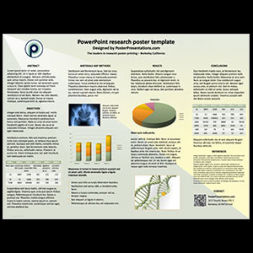
About our free research poster templates
Easy to use and customize.
▪ Change colors with one click ▪ Most standard US and international poster sizes. ▪ Support for all PowerPoint versions ▪ Only basic PowerPoint skills required ▪ Fully customizable ▪ Instructions included with the poster templates. ▪ Online video tutorials ▪ Configured to print professionally ▪ Additional layouts included in each template
40 color schemes built-in to every research poster template
Five reasons to print your poster with us >, professionally designed research poster templates.
QUICK FIND POSTER TEMPLATES American standard poster sizes (inches) 30x40 | 36x48 | 36x56 | 36x60 | 36x72 | 36x96 | 42x60 | 42x72 | 42x90 | 44x44 | 48x48 | 48x72 | 48x96 | Trifold | Virtual International common poster sizes (centimeters) 91x122 | 70x100 | 100x140 | 100x100 | 100x200 | A0 | A1 | Virtual IMPORTANT Check the requirements of your conference before you download and work on a poster template. If you need further assistance, our phone support is available and free. We are here to provide the best service you can ask for.
Step-by-Step Tutorials
This series of short videos and animated tutorials will walk you through the research poster-making process, answering the most common questions along the way.
Need further poster template assistance? 510.649.3001
Free powerpoint poster templates for research poster presentations.
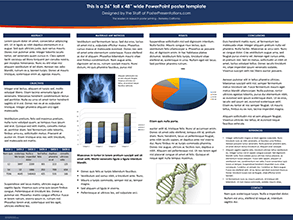
Poster template design: Aragon Standard poster sizes in inches (Height x Width) - Click on a size to download 36x48 | 36x56 | 36x60 | 36x72 | 36x96 | 42x60 | 42x72 | 42x90 | 44x44 | 30x40 | 48x48 | 48x72 | 48x96 | Trifold | Virtual - Standard Screen (4:3 Ratio) | Virtual - Wide Screen (16:9 Ratio) Standard poster sizes in centimeters (Height x Width) - Click on a size to download 122x91 | 100x70 | 140x100 | 100x100 | 200x100 | A0 | A1 ► View Samples ► Learn how to customize the template colors
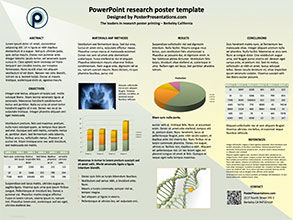
Poster template design: Beaumont Standard poster sizes in inches (Height x Width) - Click on a size to download 36x48 | 36x56 | 36x60 | 36x72 | 36x96 | 42x60 | 42x72 | 42x90 | 44x44 | 30x40 | 48x48 | 48x72 | 48x96 | Trifold | Virtual - Standard Screen (4:3 Ratio) | Virtual - Wide Screen (16:9 Ratio) Standard poster sizes in centimeters (Height x Width) - Click on a size to download 122x91 | 100x70 | 140x100 | 100x100 | 200x100 | A0 | A1 ► View Samples ► Learn how to customize the template colors
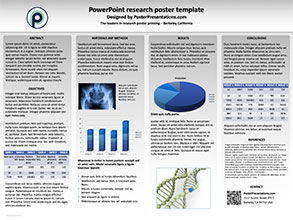
Poster template design: Newfield Standard poster sizes in inches (Height x Width) - Click on a size to download 36x48 | 36x56 | 36x60 | 36x72 | 36x96 | 42x60 | 42x72 | 42x90 | 44x44 | 30x40 | 48x48 | 48x72 | 48x96 | Trifold | Virtual - Standard Screen (4:3 Ratio) | Virtual - Wide Screen (16:9 Ratio) Standard poster sizes in centimeters (Height x Width) - Click on a size to download 122x91 | 100x70 | 140x100 | 100x100 | 200x100 | A0 | A1 ► View Samples ► Learn how to customize the template colors
Poster template design: Winchester Standard poster sizes in inches (Height x Width) - Click on a size to download 36x48 | 36x56 | 36x60 | 36x72 | 36x96 | 42x60 | 42x72 | 42x90 | 44x44 | 30x40 | 48x48 | 48x72 | 48x96 | Trifold | Virtual - Standard Screen (4:3 Ratio) | Virtual - Wide Screen (16:9 Ratio) Standard poster sizes in centimeters (Height x Width) - Click on a size to download 122x91 | 100x70 | 140x100 | 100x100 | 200x100 | A0 | A1 ► View Samples ► Learn how to customize the template colors
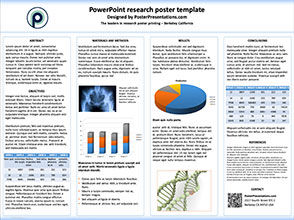
Poster template design: Lockwood Standard poster sizes in inches (Height x Width) - Click on a size to download 36x48 | 36x56 | 36x60 | 36x72 | 36x96 | 42x60 | 42x72 | 42x90 | 44x44 | 30x40 | 48x48 | 48x72 | 48x96 | Trifold | Virtual - Standard Screen (4:3 Ratio) | Virtual - Wide Screen (16:9 Ratio) Standard poster sizes in centimeters (Height x Width) - Click on a size to download 122x91 | 100x70 | 140x100 | 100x100 | 200x100 | A0 | A1 ► View Samples ► Learn how to customize the template colors
Poster template design: Kensington Standard poster sizes in inches (Height x Width) - Click on a size to download 36x48 | 36x56 | 36x60 | 36x72 | 36x96 | 42x60 | 42x72 | 42x90 | 44x44 | 30x40 | 48x48 | 48x72 | 48x96 | Trifold | Virtual - Standard Screen (4:3 Ratio) | Virtual - Wide Screen (16:9 Ratio) Standard poster sizes in centimeters (Height x Width) - Click on a size to download 122x91 | 100x70 | 140x100 | 100x100 | 200x100 | A0 | A1 ► View Samples ► Learn how to customize the template colors

Poster template design: Stone A new, simplified concept for better poster design Standard poster sizes in inches (Height x Width) - Click on a size to download 36x48 | 36x56 | Trifold | Virtual - Standard Screen (4:3 Ratio) | Virtual - Wide Screen (16:9 Ratio) Standard poster sizes in centimeters (Height x Width) - Click on a size to download A0 ► View Samples ► Learn how to customize the template colors
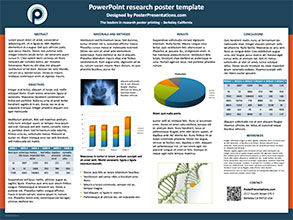
Poster template design: Marquee Standard poster sizes in inches (Height x Width) - Click on a size to download 36x48 | 36x56 | 36x60 | 36x72 | 36x96 | 42x60 | 42x72 | 42x90 | 44x44 | 30x40 | 48x48 | 48x72 | 48x96 | Trifold | Virtual - Standard Screen (4:3 Ratio) | Virtual - Wide Screen (16:9 Ratio) Standard poster sizes in centimeters (Height x Width) - Click on a size to download 122x91 | 100x70 | 140x100 | 100x100 | 200x100 | A0 | A1 ► View Samples ► Learn how to customize the template colors
Poster template design: Winston Standard poster sizes in inches (Height x Width) - Click on a size to download 36x48 | 36x56 | Trifold | Virtual - Standard Screen (4:3 Ratio) | Virtual - Wide Screen (16:9 Ratio) Standard poster sizes in centimeters (Height x Width) - Click on a size to download A0 ► View Samples ► Learn how to customize the template colors
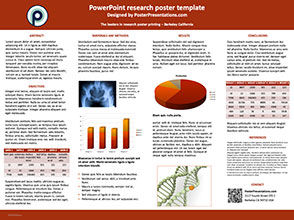
Poster template design: Chamberlain Standard poster sizes in inches (Height x Width) - Click on a size to download 36x48 | 36x56 | 36x60 | 36x72 | 36x96 | 42x60 | 42x72 | 42x90 | 44x44 | 30x40 | 48x48 | 48x72 | 48x96 | Trifold | Virtual - Standard Screen (4:3 Ratio) | Virtual - Wide Screen (16:9 Ratio) Standard poster sizes in centimeters (Height x Width) - Click on a size to download 122x91 | 100x70 | 140x100 | 100x100 | 200x100 | A0 | A1 ► View Samples ► Learn how to customize the template colors
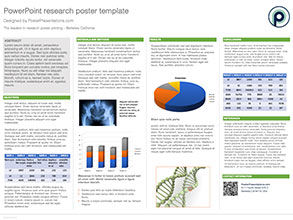
Poster template design: Forrest Standard poster sizes in inches (Height x Width) - Click on a size to download 36x48 | 36x56 | 36x60 | 36x72 | 36x96 | 42x60 | 42x72 | 42x90 | 44x44 | 30x40 | 48x48 | 48x72 | 48x96 | Trifold | Virtual - Standard Screen (4:3 Ratio) | Virtual - Wide Screen (16:9 Ratio) Standard poster sizes in centimeters (Height x Width) - Click on a size to download 122x91 | 100x70 | 140x100 | 100x100 | 200x100 | A0 | A1 ► View Samples ► Learn how to customize the template colors
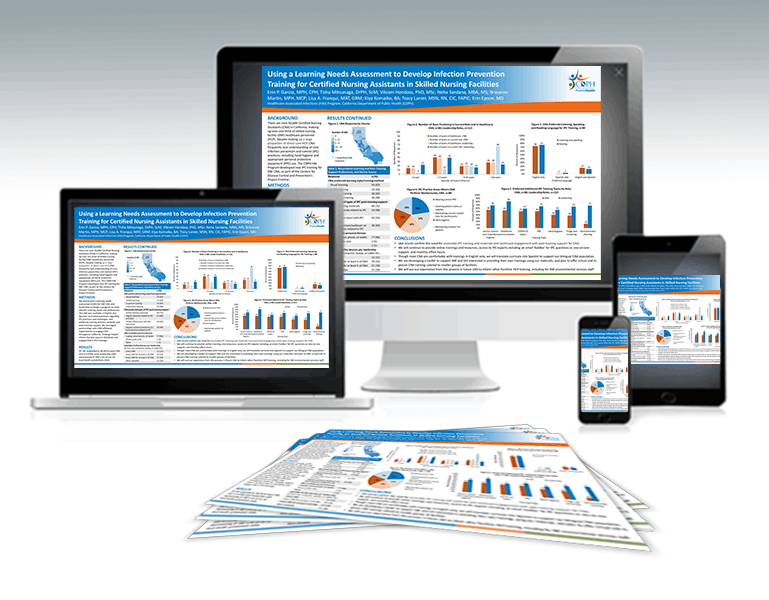
PAPERLESS POSTER PRESENTATION HANDOUTS
Free with a printed poster order.
A feature-packed alternative to traditional paper poster handouts
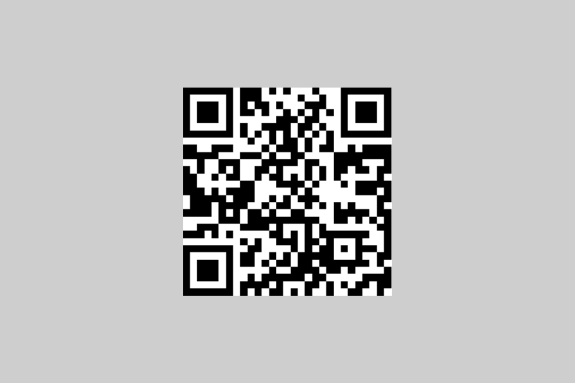
Instant QR Code Generator
Add functionality to your poster! Share a link to a page, your email or additional info on the web. It's easy, free and further connects your audience!
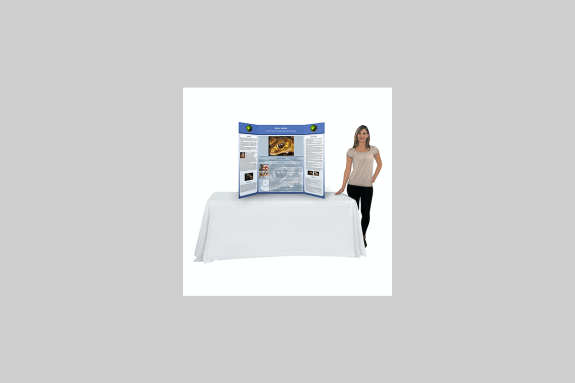
Professional Trifold Poster Boards
Ready to use out of the box. Great solution for tabletop 36x48 Trifold poster presentations. Price includes printing, mounting and free Ground FedEx shipping.
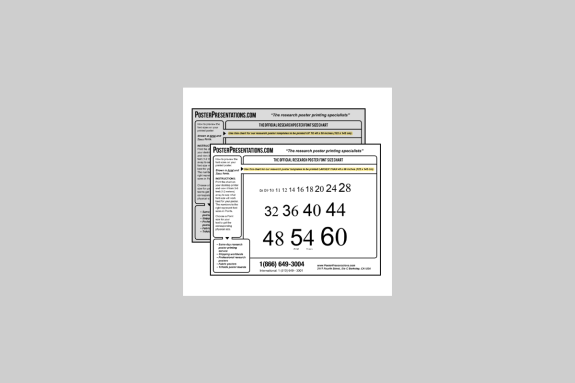
Poster Font Size Checker
A convenient way to visualize what size the text will be on your printed poster. Wondering how big the fonts will be on your poster? Download and print this PDF on your desktop printer.

Quick access to ALT code symbols
Click here to choose from over 350 easy to copy and use ALT code symbols.
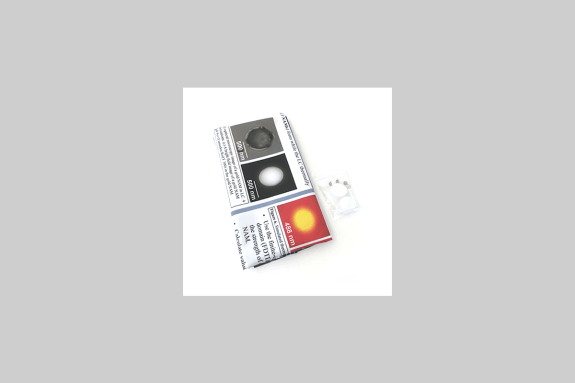
Fabric Research Posters
Say goodbye to poster tubes with a professional fabric poster you can pack in your luggage! With our crease-resistant EasyTravel™ fabric your presentation will look professional, sharp, and will pack nicely in your carry-on.
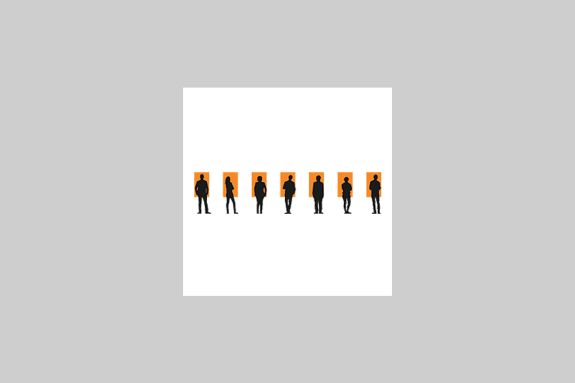
Simplify Your Group’s Poster-Ordering Process
Join our free service designed to help you coordinate your group’s poster orders, get discounted rates and customized special features not normally available for standard orders.
Links to university corporate identity (Logo) pages
List of corporate identity pages where you can download university logos to use with your poster presentation. Help your fellow researchers. Good quality logos for use in printed research posters are difficult to find online. If you have a link to the identity page of your university, email it to us and we will add it to our list for others to use.
UC Berkeley Texas A&M UCLA Columbia Medical Center Stanford University
Adelphi University Duke University UPENN Bradley University ENMU
UNC Chapel Hill Northwestern University Magnet recognition Seal Howard University University of Houston
Drexel University Carlow University UNLV UNR UFL
TUFTS George Mason U. St. Scholastica College Mount Royal University Penn State
Yale University University of Wisconsin SD School of Mines USC GATECH
STARTER POWERPOINT POSTER TEMPLATES
Standard size research poster templates in inches use these starter poster templates as a starting point for your own poster designs, thumbnails of posters are shown in proportion to each others’ sizes based on a 48 inch (height) x 96 inch (width) display area, 36” tall x 48” wide .
STARTER 36x48 POWERPOINT POSTER TEMPLATE The 36x48 scientific poster template size is one of the smaller sizes and also one of the most common. It is very suitable for scientific posters with low to moderate amount of text and graphics. The 36x48 research poster template can also be printed at the following sizes without distortion or any necessary adjustments: 36x48 (Standard), 42x56, 48x64, 30x40
Trifold (tabletop)
STARTER TRIFOLD POWERPOINT POSTER TEMPLATE These free PowerPoint poster templates are designed for a standard 3x4 foot poster presentation to be mounted on a standard Trifold poster board. This research poster template should be printed only at the following size: 36x48 (Standard Trifold) This poster template is for a standard Trifold board presentation. You can use it with poster boards available at office-supply stores or our professional ready-to-use Trifold poster presentation product. Are you looking for a larger MonsterBoard template? Use this PowerPoint MonsterBoard template.
36” Tall x 56” Wide
STARTER 36x56 POWERPOINT POSTER TEMPLATE This free PowerPoint poster template is designed for a standard 3x4.5 foot poster presentation. This PowerPoint research poster template is for a medium size poster. It is suitable for most poster presentations. It can accommodate moderate to large amounts of content. This scientific poster template can be printed at the following sizes: 36x56 (Standard), 42x65.3, 48x74.6
36” Tall x 60” Wide
STARTER 36x60 POWERPOINT POSTER TEMPLATE This free PowerPoint poster template is designed for a standard 3x5 foot poster presentation. This is also one of the standard sizes. It is used mostly when the height of the presentation board is only three feet and there is more content to present that can fit in a 48x36 poster. This scientific poster template can be printed at the following sizes: 36x60 (Standard), 42x70, 48x80
36” Tall x 72” Wide
STARTER 36x72 POWERPOINT POSTER TEMPLATE This free PowerPoint poster template is designed for a standard 3x6 foot poster presentation. The same as the above scientific poster template, only wider by a foot. Again, it depends on how much content you need to present. This scientific poster template can be printed at the following sizes: 36x72 (Standard), 42x84, 48x96
36” Tall x 96” Wide
STARTER 36x96 POWERPOINT POSTER TEMPLATE This free PowerPoint poster template is designed for a standard 3x8 foot poster presentation. It’s the widest one you can use on a three foot tall presentation board. It has five columns. This scientific poster template can be printed at the following sizes: 96x36 (Standard), 24x64
42” Tall x 60” Wide
STARTER 42x60 POWERPOINT POSTER TEMPLATE This free PowerPoint poster template is designed for a standard 3.5x5 foot poster presentation. This PowerPoint research poster template is suitable for most poster presentations. It can accommodate moderate to large amounts of content. This scientific poster template can be printed at the following sizes: 42x60 (Standard), 36x51.42, 48x68.57
42” Tall x 72” Wide
STARTER 42x72 POWERPOINT POSTER TEMPLATE This free PowerPoint poster template is designed for a standard 3.5x6 foot poster presentation. This PowerPoint research poster template is for a medium size poster. It is suitable for most poster presentations. It can accommodate moderate to large amounts of content. This scientific poster template can be printed at the following sizes: 42x72 (Standard), 36x61.70, 48x82.28
42” Tall x 90” Wide
STARTER 42x90 POWERPOINT POSTER TEMPLATE This free PowerPoint poster template is designed for a standard 3.5x7.5 foot poster presentation. This PowerPoint research poster template is for a large size poster. It is suitable for most poster presentations. It can accommodate moderate to large amounts of content. This scientific poster template can be printed at the following sizes: 42x90 (Standard), 36x77.14, 44x94.28
44” Tall x 44” Wide
STARTER 44x44 POWERPOINT POSTER TEMPLATE This free PowerPoint poster template is designed for a standard 3.7 x 3.7 foot poster presentation. This PowerPoint research poster template is for a medium size poster. It is suitable for many poster presentations. It can accommodate moderate amounts of content. This scientific poster template can be printed at the following sizes: 44x44 (Standard), 36x36, 42x42, 48x48
48” Tall x 72” Wide
STARTER 48x72 POWERPOINT POSTER TEMPLATE This free PowerPoint poster template is designed for a standard 4x6 foot poster presentation. This PowerPoint research poster template is for a medium/large size poster. It is suitable for most poster presentations. It can accommodate moderate to large amounts of content. This scientific poster template can be printed at the following sizes: 48x72 (Standard), 24x36, 42x63
48” Tall x 48” Wide
STARTER 48x72 POWERPOINT POSTER TEMPLATE This free PowerPoint poster template is designed for a standard 4x4 foot poster presentation. This scientific poster template is a good size for limited available spaces without compromising room for content. This research poster template can be printed at the following sizes: 48x48 (Standard), 36x36, 24x24, 42x42
48” Tall x 96” Wide
STARTER 48x96 POWERPOINT POSTER TEMPLATE This free PowerPoint poster template is designed for a standard 4x8 foot poster presentation. This poster template is for the largest size poster usually allowed in conferences. It can accommodate a lot of content. You can use this template if you also have a large number of photos, tables, charts, and text. This scientific poster template can be printed at the following sizes: 48x96 (Standard), 24x48, 42x84, 36x72
40” Tall x 30” Wide
STARTER 40x30 POWERPOINT POSTER TEMPLATE This free PowerPoint poster template is designed for a standard 40x30 inch poster presentation. This vertical poster template can accommodate a moderate amount of content. It can accommodate several photos, tables, charts, and a decent amount of text. This scientific poster template can be printed at the following sizes: 40x30 (Standard), 48x36, 56x42
Free PowerPoint poster templates in metric sizes (cm) for international poster conferences
Thumbnails of posters are shown in proportion to each others’ sizes based on a 200 cm (height) x 100 cm (width) display area, 91 wide x 122 tall.
STARTER 91cmX122cm POWERPOINT POSTER TEMPLATE This free PowerPoint poster template is designed for a standard metric 91 cm by 122 cm scientific poster presentation for international poster sessions. This PowerPoint poster template is essentially a vertical version of a standard 48x36 inch poster presentation. This scientific poster template can be printed at the following sizes: 91 cm x122 cm (Standard 36x48 inches), 76x102 cm
70 Wide x 100 Tall
STARTER 70cmX100cm POWERPOINT POSTER TEMPLATE This free PowerPoint poster template is designed for a standard metric 70 cm by 100 cm scientific poster presentation for international poster sessions. This PowerPoint poster template is for a small size poster poster presentation commonly used at international conferences. This scientific poster template can be printed at the following sizes: 70 cm x100 cm (Standard 27.5x39.37 inches), 100x143 cm
100 Wide x 140 Tall
STARTER 100cmX140cm POWERPOINT POSTER TEMPLATE This free PowerPoint poster template is designed for a standard metric 100 cm by 140 cm scientific poster presentation for international poster sessions. This PowerPoint poster template is for a small size poster poster presentation commonly used at international conferences. This scientific poster template can be printed at the following sizes: 100 cm x140 cm (Standard 39.37x55.12 inches)
1 Meter x 1 Meter
STARTER 100cmX100cm POWERPOINT POSTER TEMPLATE This free PowerPoint poster template is designed for a standard metric 1 meter by 1 meter scientific poster presentation for international or domestic poster sessions. This template is commonly required at the Keystone Symposia research poster conferences. This scientific poster template can be printed at the following size: 100 cm x 100 cm (Standard 39 x 39 inches). Any square size up to 121 x 121 cm
100 Wide x 200 Tall
STARTER 100cmX200cm POWERPOINT POSTER TEMPLATE This free PowerPoint poster template is designed for a standard metric 1 meter by 2 meter scientific poster presentation for international or domestic poster sessions. This scientific poster template can be printed at the following size: 100 cm x 200 cm (Standard 39 x 78 inches)
STARTER A0 POWERPOINT POSTER TEMPLATE This free PowerPoint poster template is designed for a standard metric A0 scientific poster presentation at a 841mm x 1189mm size for international or domestic poster sessions. This scientific poster template can be printed at the following size: 46.81 inches x 33.11 inches
STARTER A1 POWERPOINT POSTER TEMPLATE This free PowerPoint poster template is designed for a standard metric A1 scientific poster presentation at a 594mm x 841mm poster size for international or domestic poster sessions. This scientific poster template can be printed at the following size: 23.39 inches x 33.11 inches
VIRTUAL POSTER PRESENTATION
STARTER POSTER TEMPLATES These free PowerPoint poster templates are designed for screen presentations at virtual meetings Virtual - Standard Screen (4:3 Ratio) Virtual - Wide Screen (16:9 Ratio)
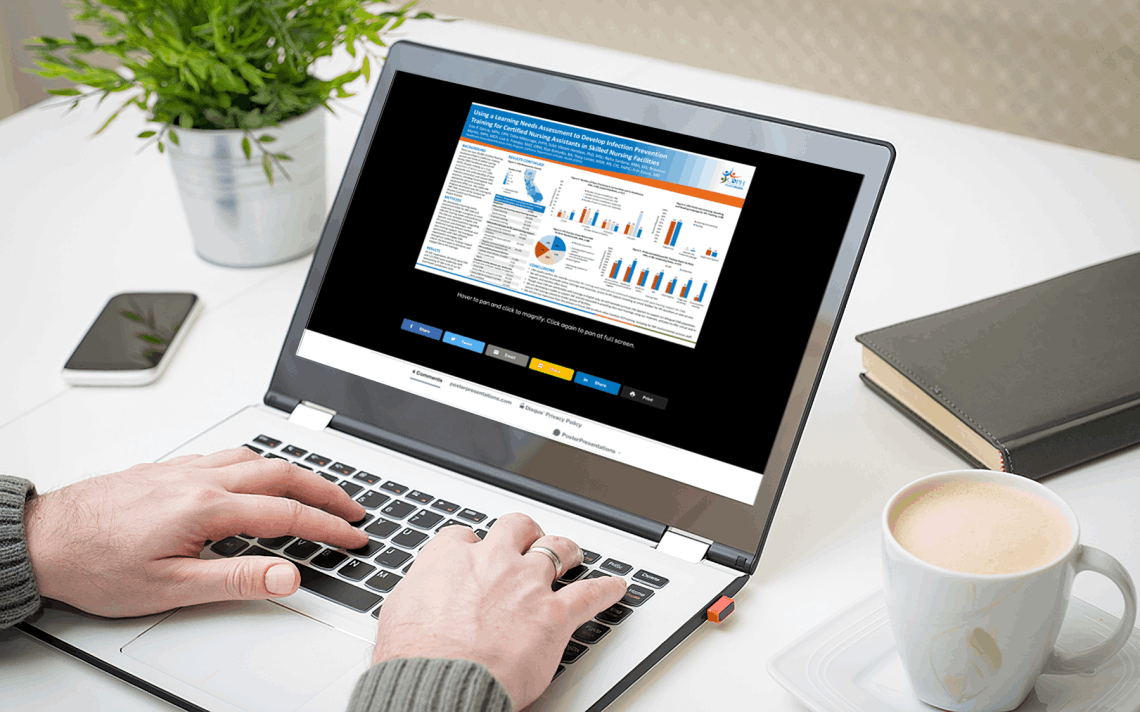
Virtual poster sessions for conferences and meetings of all sizes
If you are a meeting organizer we can help you set up a virtual poster session, free yourself from managing poster submissions and provide your meeting's attendees with a versatile presentation platform that will meet all your requirements.
Five good reasons to print your poster with PosterPresentations.com
Amazingly fast printing: Experience amazingly fast printing with us! If you place your poster order between Monday and Friday before 3pm Eastern time (noon Pacific time), we'll ship it out the same day. You can expect your delivery within one, two, or three business days. Plus, if you give us an additional two business days, we'll provide free shipping! Top-Quality Materials: We take pride in using the finest materials available in the industry. Our prints are produced on high-quality photographic papers, vinyls, and exquisite fabrics. In fact, we were the pioneers of fabric printing for research posters in the USA back in 2008. Reliable Customer Support: Rest assured that we don't simply print whatever you send us. We ensure that your files are optimized for the best possible printing results. If we notice any issues, we'll promptly inform you. Your presentation matters as much to us as it does to you. Competitive Pricing with No Surprises: As a professional, you'll find our prices to be competitive, and we never add unexpected last-minute fees. Furthermore, expedited printing is always included at no extra cost. For students, our prices are among the lowest nationwide. Group Discounts Available: Place a group order with us and not only will you enjoy free shipping, but also discounts that can beat most of our competitors. Feel free to reach out to us at 510.649.3001 for more information.
PosterPresentations.com 2117 Fourth Street STE C Berkeley California 94710 USA
Copyright © 2024
Poster Printing
Research paper posters
Fabric posters
Trifold poster boards
Rollup banners
Dry-erase whiteboards
PowerPoint poster templates
Poster-making tutorials
Google Slides support
Terms and Privacy
Poster design services
New Services
Virtual poster meetings
- Paperless poster handouts

Department of Psychology

Poster Presentations
Vote for your favorite research posters.
- 30 years of working for happiness in personal life and success in studies and profession of our students, clients and patients trough the Integrated Psychotherapy/Knobloch
- An Integrative Analysis of Mental Processes in Terms of Existential, Psychodynamic, and Cognitive Approaches: A structural Equation Modeling Study
- Anticipated Self-Stigma and Psychopathology Symptoms in a Spanish-Speaking Latino Sample
- ASSESSING RELIGIOUS AND SPIRITUAL COMPETENCY IN PSYCHOTHERAPY
- Client Needs Approach to Treatment: A Type of Technical Eclecticism
- Effects of Therapist Mindfulness on the Therapeutic Alliance and Patient Outcome in the Treatment of Borderline Personality Disorder
- Embodied Psychotherapy: Navigating Emotions and Quantifying Autonomic Nervous System Parameters
- Exploring Ecological Dynamic Patterns: Characterizing Patients with Major Depressive Disorder with vs. without Borderline Personality Disorder
- Group Therapy for Individuals with Mild/Moderate Traumatic Brain Injury Based on Principles of Frankl’s Logotherapy: Case Studies
- Layered Integrative Psychotherapy
- Mindful Living in the Digital Age
- Psikoterapi ve Yapay Zeka
- Psychotherapy of emotional and psychosomatic regulation: the transformational processes in psychotherapy at the light of polivagal theory
- Relationships Among Depression Symptomology, Masculine Ideology, and Help-Seeking Attitudes in Adult Cisgender Men: A Moderated Moderation Model
- Seeking Accurate Empathy: Five essential questions support integrated training
- Smooshing Statistical Ghosts: A Cautionary Note to Psychologists Using Data From a Study About Humor
- Specialty Mental Health Care Deserts: Predictors of Availability of Psychiatry and Psychotherapy Offices
- The acceptability of a one-time peer led intervention for childhood sexual abuse survivors
- The Living Web of Socio-Spirituality: Integrating Social Justice and Spirituality in Training
- Therapists' interventions that facilitate productive client's narrative and experiential processes
- Unified Psychotherapy for Trauma (UP-T): Active Ingredients and Guidance for Integration
Poster Presentations Home
Virtual Poster Session

Thinking about UNT?
It's easy to apply online. Join us and discover why we're the choice of over 46,000 students.

IMAGES
VIDEO
COMMENTS
This poster is not my best draft (and you're not expected to master anything in the first try!), but I think you can learn a lot from my shortcomings to improve your own presentation. Figure 1 . Poster presented at the Western Psychological Association (WPA) 102 nd Annual Convention at Portland, Oregon (Bui & Chang, 2022)
The first thing people will look at is the poster's title, says Warren Street, PhD, a professor emeritus of psychology at Central Washington University who's judged poster sessions for years. The title should let people know what your poster is about in one brief sentence, he says. "You're marketing your ideas," he says.
Tailor your psychology poster to resonate with your audience by considering their interests and needs. Frame your content in a way that directly speaks to the experiences and concerns of your audience. Condense your research into core findings and present them clearly and concisely. Simplify complex information using visuals, simple language ...
To print at Kinkos: Select "Print online" on the main part of the website. Select "Get Started" > "All other Documents" > You will be guided to a webpage where you can upload your .pdf poster. Select "Review Options" Here, you can indicate anything about how you want your poster to look when it is printed out.
Psychology 51 Poster TemplateExample PosterPoster Formatting InstructionsFontsSans serif fonts for titlesSerif fonts for textFont sizes 24-28 for main textWhite background (save the earth!)Use the same margins, align themMax width: 48"Max length: 36"Alternative (New) TemplatesCheck out this video on a revolutionary way to create posters that people will actually engage with at poster sessions!
b. A poster should be self-sustaining i. The poster should be able to stand alone. A good poster contains just enough information to be understandable. The presenter can always fill in the gaps if requested by a viewer. c. Posters speak, but you speak better i. Once you have an audience, you will begin an oral presentation. ii.
A typical presentation lasts anywhere between 5-15 minutes. You can begin by introducing yourself - this is especially important if you're on the job market. In your presentation, you should make sure to hit some key points about your research. Resist the temptation to read your poster and instead, use the oral presentation to supplement ...
Research posters summarize information or research concisely and attractively to help publicize it and generate discussion. The poster is usually a mixture of a brief text mixed with tables, graphs, pictures, and other presentation formats. At a conference, the researcher stands by the poster display while other participants can come and view ...
128 templates. Create a blank Psychology Poster. Green Illustrative Mental Health Poster. Poster by Firstyline. Purple Illustrated Motivational Quote Poster. Poster by Marina Zlochin. Key Concept Poster - Readings. Poster by Daydream Designs. Pink and Purple Illustrative Self Love & Mental Health Poster.
Conclusions. Effective research posters should be designed around two or three key findings with accompanying handouts and narrative description to supply additional technical detail and encourage dialog with poster viewers. Keywords: Communication, poster, conference presentation. An assortment of posters is a common way to present research ...
Your Poster. For professional conferences, have your poster printed on a large a single sheet of paper. At Muhlenberg, you can do that for about $35 and three days of lead time; talk to Mrs. Gonzalez for details. For Psychology Day, you also have the option of printing your poster on multiple sheets of regular paper, with each sheet backed by a ...
Posters are a key component of communicating your science and an important element in a successful scientific career. Posters, while delivering the same high-quality science, offer a different medium from either oral presentations [] or published papers [], and should be treated accordingly.Posters should be considered a snapshot of your work intended to engage colleagues in a dialog about the ...
3.4. Tables and figures. It is a good idea to include graphs/images/tables as this will make your poster look more aesthetically pleasing [1], [6], [7]. They can also provide more information without crowding the poster with text. Make them colourful, though avoid colours that clash with the text colour [8].
Poster Preparation. Information about the formatting of your poster is available from the APA . Below are some poster templates for creating a poster using PowerPoint. Please note that these are provided as templates. The information in the posters may not be accurate and/or relevant to your poster. Suggested templates: Template 1. Template 2.
Posters Presentations. Poster presentations provide the opportunity for the presenter and the audience to talk with one another. Each presenter is provided with a freestanding bulletin board or a small table top on which to display his or her poster. Usually a space 3.5 feet high by 3 feet wide is available for the poster materials.
A poster presentation is a method of communication which requires a unique design approach. Your poster is an introduction to your topic and should provide just enough information to spark a conversation between you and your audience. This page will guide you toward making a quality poster capable of grabbing attention and inspiring a quality ...
The poster board surface area is 4' high and 8' wide and will contain the poster number assigned to your poster so you will know which board to use. Your printed poster must fit within the poster board surface, but need not fill the entire area. Your poster must contain the abstract title and the name (s) of the poster author (s).
The poster must have the strolling audience in mind. Attention will invariably be drawn to colorful posters with a crisp, clean design and a large easily read title. The Poster Title. For a poster title to be easily read, it must be large. Keep in mind that the title is at the very top of the board, i.e., approximately 7 feet from the floor level.
From past URCAD events Select image to view the poster. Mobolanle Adebesin Psychology Eric Adjakwah Health Administration and Policy Theophilus Aluko Mechanical Engineering Hannah Aris Chemical, Biochemical, and Environmental Engineering Robin Arnold Psychology Riley Auer Ancient Studies Zoe Wang Visual Arts Farhan Augustine Chemistry and Biochemistry Cara Borja Psychology Syrena Bracey ...
Psychology and Law. Anna Stenkamp. Free Will Belief and Perceptions of Procedural Justice in Police-Suspect Interactions. Kristyn Jones. At a distance: The effect of Threat on People's Perceptions of Distance in Police Recorded Encounters. American Psychology-Law Society Conference, 2020. Patricia Sanchez.
Tell a story or an anecdote. A good grabber captures the attention of everyone there, and makes them focus on what you have to say. 4. Crystalize your message and construct your arguments: Your ...
This free PowerPoint poster template is designed for a standard 4x4 foot poster presentation. This scientific poster template is a good size for limited available spaces without compromising room for content. This research poster template can be printed at the following sizes: 48x48 (Standard), 36x36, 24x24, 42x42.
Poster Presentations. Anderson, G. N., Conway, C. C., Bravo, A. J., & The Cross-cultural Addictions Study Team (2021, November 16-21). Distress tolerance predicts alcohol use motives and severity in samples from four continents [Poster presentation]. 2021 Association of Behavioral and Cognitive Therapies Annual Convention, virtual.
Poster Presentations Home; Poster Presentations Home. Virtual Poster Session. Thinking about UNT? It's easy to apply online. ... [email protected]. Visit Us Advising Office. GAB 220. Department of Psychology. Terrill Hall 316 . Send Us Mail 1155 Union Circle #311280 Denton, Texas 76203-5017 Fax: (940) 565-4682 ...